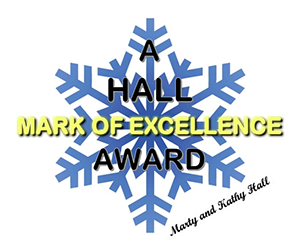 This coverage is made possible through the generous support of Marty and Kathy Hall and A Hall Mark of Excellence Award. Learn more about A Hall Mark of Excellence Award—or about supporting FasterSkier coverage—by contacting info@fasterskier.com.
This coverage is made possible through the generous support of Marty and Kathy Hall and A Hall Mark of Excellence Award. Learn more about A Hall Mark of Excellence Award—or about supporting FasterSkier coverage—by contacting info@fasterskier.com.
Ben Ogden was kind enough to spend a recent afternoon with FasterSkier assessing his 2022-2023 World Cup season, and discussing the sorts of plans he has for training in this off-season. We met in the barn at the Ogden family farm in southern Vermont. Part I of this interview debuted earlier on FasterSkier. This article represents Part II of Ben Ogden, In His Element.
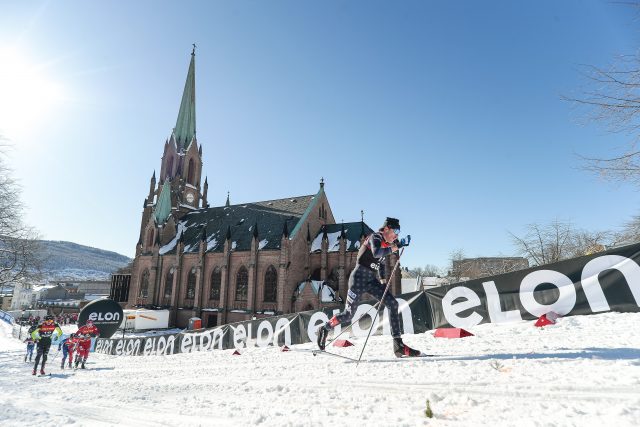
Out with the Old . . .
When asked whether or not he considered his recent 2022-2023 World Cup campaign to have been a breakthrough season, Ben Ogden expressed a certain amount of satisfaction, but in a thoughtful and circumspect manner:
“I had good seasons in college, and before college,” Ogden said. “But when that level is done and you move up to the next, you realize, ‘Man, I really need to just work on everything.’ That’s when I began to realize that the old way of doing things—seasons for school, seasons for work and play, seasons for summer training—really had run its course. It was time to become a skier, full time.”

Ogden identified elements of his technique, his individual strengths, and his potential that can seem like limitations (especially his ability as a sprinter, and the temptation to specialize in that discipline). Conversely, he also identified challenges that could be beaten or overcome.
“I can see my own weaknesses,” he offered. “I feel confident in my ability to change those, and to get better at almost everything. That being said, I do think that there are some things that I see other athletes able to do and it’s like ‘I’m not that guy.’ And if I’m going to beat that guy, I’m going to need to take a different avenue. Too many of us race the way the race-winners want us to race. Why would that ever work?”
“I race against a lot of people who have trained a lot more than me, who are older than me,” Ogden said. “I have room to grow. There’s been a lot of mention of my tactics, and it’s totally true: I was trying different things because I’m impatient and competitive. But realistically that was an effort that really stood to expose my weaknesses, and that’s kind of motivating in a way. Now in this training season I think about distinct moments—moments from this season—where I thought, ‘I need to be better at this, this, and this.’ That’s why I feel that the last season was a breakthrough.”
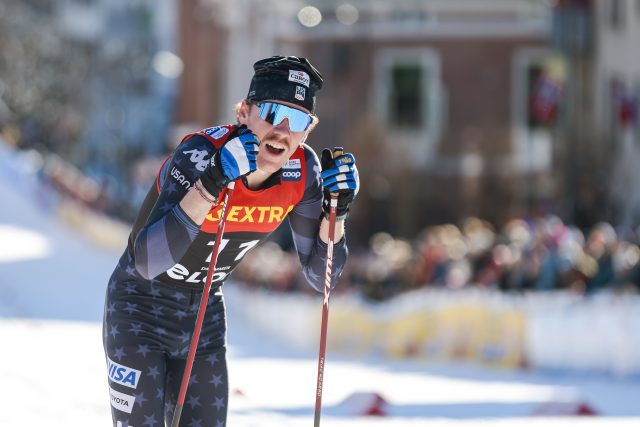
Racing and Tactics
The tactics he mentioned were in reference to Ogden’s highly-publicized, sometimes criticized, seemingly outrageous, almost comical, go-from-the-gun race strategy. Even sprint king, Johannes Hoesflot Klaebo, made mention of Ogden’s strategy in comments that described Ogden’s ability to disturb the status quo.
“You want to emulate those who are the best,” Ogden said. “But you also want to understand that if everybody went out and copied Klaebo, then only Klaebo would win. The better strategy seems likely to come from the guy who does something a little bit different. Klaebo doesn’t ski like Petter Northug did, and Northug didn’t ski like the superstars before him. That’s gotta be true in every sport; being such a technical sport, skiing is especially prone to that. The people who can figure out a newer style—or their own style—are the ones who are likely to have success.”
That realization led to a series of races (first sprint heats; later, similar experimentation in select distance events) in which Ogden shot off the starting line, full gas, determined to make others chase in ways that would disturb other strategies and test the limits of other skiers. His tactics were especially effective in sprint events:
“If this is the semi—and you make the pace super-fast—you only really need to get fourth,” he said. “There’s plenty of risk in that, but you gotta experiment. How many times am I going to go out there and try to do everything perfectly, and still find myself getting knocked out? Why not just try something? I know I have the strength to push the pace from the gun. Why not just try it? I might get knocked out either way; but I’ve tried so many different things, and it’s become sort of frustrating. Eventually I was like, ‘You know what? I’m just gonna try it.’ It was kinda great: the Norwegians—who consider themselves the gods of all things skiing—were laughing at me and telling me that I’m a fool. But who cares? At least they’re talking to me!”
I just gotta do it. I’m out here, I gotta try it.
“Every time I did it, I legitimately thought it was my best chance at getting through: 100%. It was never for the dramatics of it, except for maybe the semifinal in Drammen. So many people cheering and so many people freaking out, I was like, ‘I just gotta do it. I’m out here, I gotta try it.’ Drammen was a lot of fun; maybe one of the highlights of the season.”
Crowds on World Cup sidelines went crazy for it; broadcast announcers were loving it, and audiences at home were thrilled to see this young American with his skill and audacity on display. Gaining attention (in sport) usually means drawing attention away from someone else; skiers on the World Cup tour may need to get used to this new presence:
“At the Tour de Ski, there was one other skier who was kind of grumpy about it. He needed our heat to be tactical, and there were simply no tactics involved. I’ve been in his shoes plenty of times: off the back by a mile, wishing the heat had been tactical rather than a drag race. In general, they laugh about it. The thing of it is that [Americans] are already looked at as the group that does things differently. We spend the entire year in Europe, we’re not historically a skiing nation. It’s sort of fun to play to that ‘look’ a little bit.”
“With us Americans, we need to work on the fundamentals. And fundamentals you learn from watching the best: technique, pacing, strategy, fueling, recovery. That’s the sort of stuff that I can certainly get better at. That’s when it IS a good strategy to look at somebody better than me and say, ‘I need to do that.’ It’s a balance, for sure.”
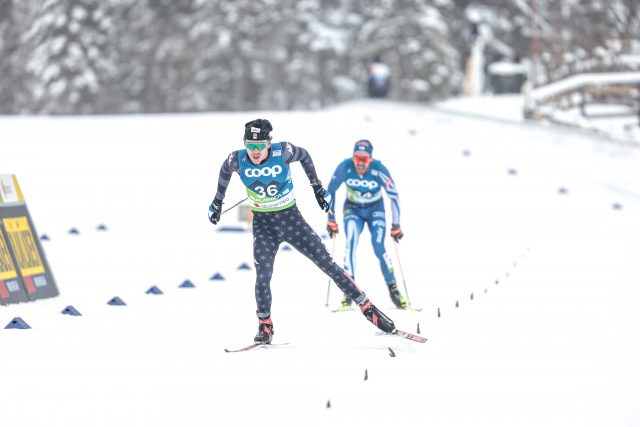
Distance Racing
Ogden admitted that the race schedule, his own training preparation, and the mood of certain race days all contributed to his otherwise unexpected success in World Cup distance racing this season:
“[Distance training] was part of my training throughout the year. I did a little more intensity in the fall, but ultimately my strong distance racing was a little bit of a surprise. I was targeting the sprint races, but a big goal of mine after last season was like, ‘You can qualify well, you can get to the semifinal…you just need more fitness.’ Making a sprint final is a long, long day. And being competitive in that final is an even longer day. So that was a big goal of mine after last year: I made weird, side-stepped progress in sprinting—but also forward progress. I also made a big jump in distance racing, which was cool but not totally expected.”
Ironically, it seemed that the daunting mini-tour schedule of so many World Cup weekends worked in Ogden’s favor:
“[World Cup] weekends always start with sprints, followed by a distance, or even two distances,” Ogden said. “I’d have big goals for the sprints, but often times sprinting is horrendously frustrating. Even if you achieve your goals and you’re getting better, you’re still always so so close to that next thing, right? I could show up to a World Cup tomorrow and get second—which would blow my goals out of the water—but if first was literally right there ahead of me, I’d still be disappointed as I crossed the finish line. The difference in a distance race is that you pour your heart into it—maybe still getting beat by a minute—and you are somehow okay with that.”
I just loved going into the distance race and not having to worry about the tactics, not having to worry about what’s going on around me, just go out and race.
“What was happening was that I was coming out of these sprint races just a little bit frustrated. And I just loved going into the distance race and not having to worry about the tactics, not having to worry about what’s going on around me, just go out and race. It was such a nice feeling, especially since at the beginning of the season I wasn’t putting a lot of emphasis on [distance races]. I’d just do my best and see what happened. It was just a really nice change, one I found myself looking forward to after the sprint races…a way to get all the frustration out.”
FasterSkier’s interview—Ben Ogden, In His Element— will conclude with Part III, to be posted in days to come.
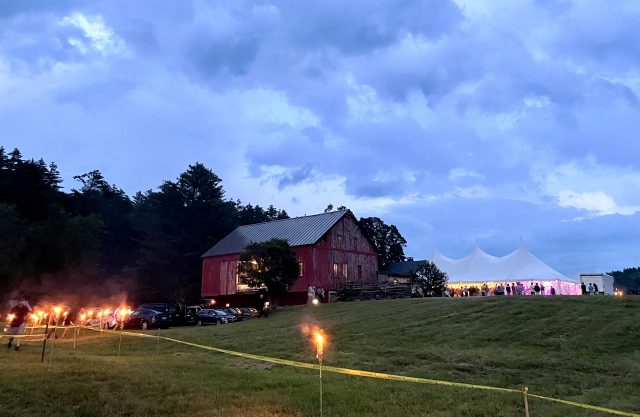
Editor’s note: The barn at the Ogden family farm hosted more than just an afternoon of friendly interview. Soon after, much of the American skiing community gathered there to commemorate John Ogden—father of Ben, Katharine, Charlotte, and husband to Andrea—who passed away just days after this interview. It was a marvelous, joyous event with hundreds of friends, neighbors, and skiers in attendance. Bill Koch and Sverre Caldwell were on hand to organize cars in the parking lot . . . that’s the sort of gathering it was: so many luminaries from the Nordic skiing world arrived that both the most influential contemporary Nordic coach and a World Cup Champion/Olympic Medalist and were needed to park cars. It seemed like the entire skiing world had come to this corner of Vermont to bid a fond farewell to legendary coach, cheerleader, race organizer, event timer, and good friend. Vermont has never seemed greener . . .
John Teaford
John Teaford—the Managing Editor of FasterSkier — has been the coach of Olympians, World Champions, and World Record Holders in six sports: Nordic skiing, speedskating, road cycling, track cycling, mountain biking, triathlon. In his long career as a writer/filmmaker, he spent many seasons as Director of Warren Miller’s annual feature film, and Producer of adventure documentary films for Discovery, ESPN, Disney, National Geographic, and NBC Sports.



